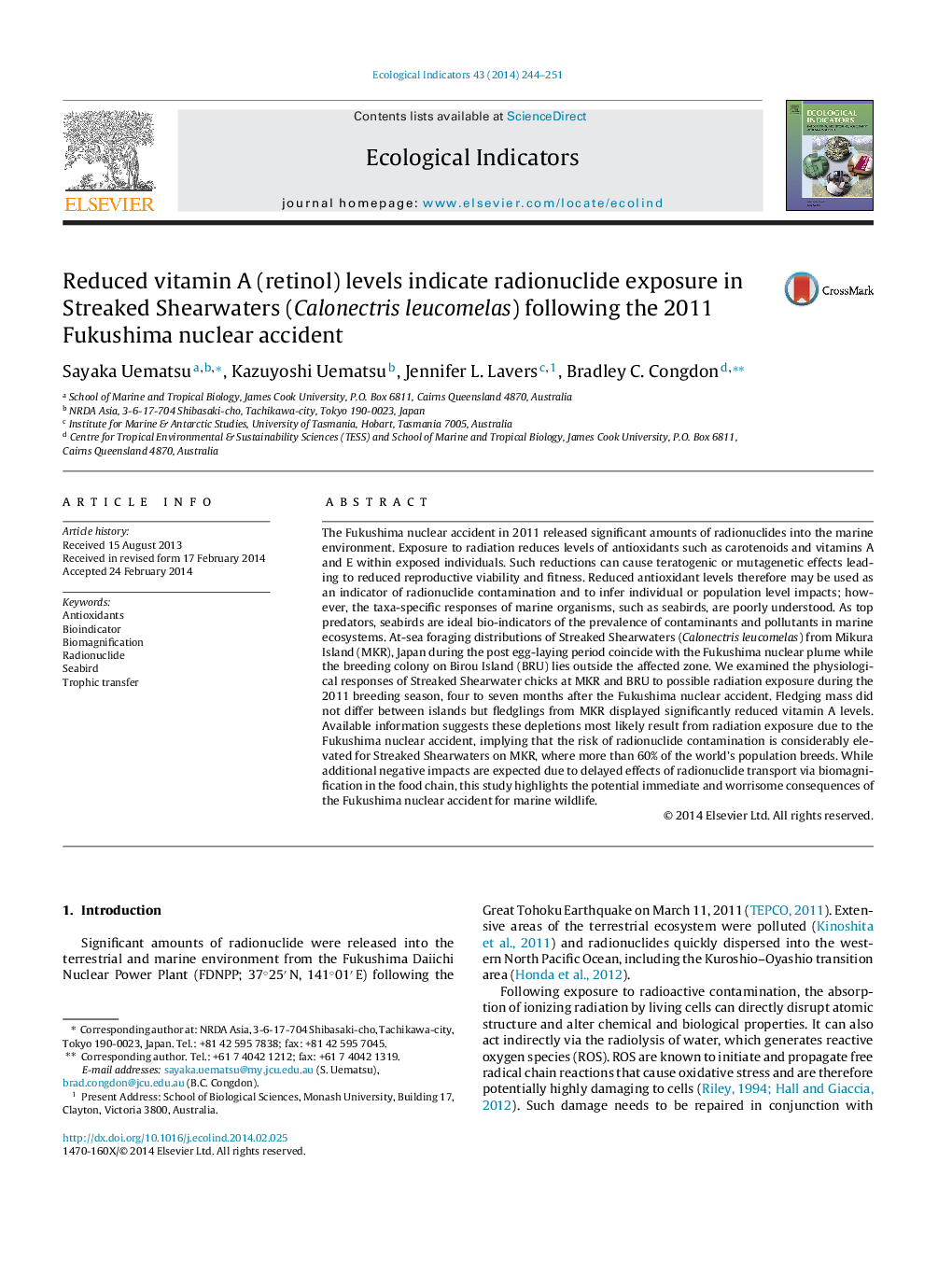| کد مقاله | کد نشریه | سال انتشار | مقاله انگلیسی | نسخه تمام متن |
|---|---|---|---|---|
| 4373177 | 1617158 | 2014 | 8 صفحه PDF | دانلود رایگان |

• We investigated the immediate physiological response of shearwater chicks to potential radionuclide exposure following the Fukushima nuclear accident.
• We compare vitamin A levels between breeding colonies where adults forage within and outside the affected zone.
• Flegdlings from the colony from the affected zone display reduced level of vitamin A.
• The risk of radionuclide contamination is considerably elevated for marine wildlife in the vicinity of the Fukushima plume.
• This study provides preliminary data that will underpin longer term radioecological monitoring studies.
The Fukushima nuclear accident in 2011 released significant amounts of radionuclides into the marine environment. Exposure to radiation reduces levels of antioxidants such as carotenoids and vitamins A and E within exposed individuals. Such reductions can cause teratogenic or mutagenetic effects leading to reduced reproductive viability and fitness. Reduced antioxidant levels therefore may be used as an indicator of radionuclide contamination and to infer individual or population level impacts; however, the taxa-specific responses of marine organisms, such as seabirds, are poorly understood. As top predators, seabirds are ideal bio-indicators of the prevalence of contaminants and pollutants in marine ecosystems. At-sea foraging distributions of Streaked Shearwaters (Calonectris leucomelas) from Mikura Island (MKR), Japan during the post egg-laying period coincide with the Fukushima nuclear plume while the breeding colony on Birou Island (BRU) lies outside the affected zone. We examined the physiological responses of Streaked Shearwater chicks at MKR and BRU to possible radiation exposure during the 2011 breeding season, four to seven months after the Fukushima nuclear accident. Fledging mass did not differ between islands but fledglings from MKR displayed significantly reduced vitamin A levels. Available information suggests these depletions most likely result from radiation exposure due to the Fukushima nuclear accident, implying that the risk of radionuclide contamination is considerably elevated for Streaked Shearwaters on MKR, where more than 60% of the world's population breeds. While additional negative impacts are expected due to delayed effects of radionuclide transport via biomagnification in the food chain, this study highlights the potential immediate and worrisome consequences of the Fukushima nuclear accident for marine wildlife.
Journal: Ecological Indicators - Volume 43, August 2014, Pages 244–251